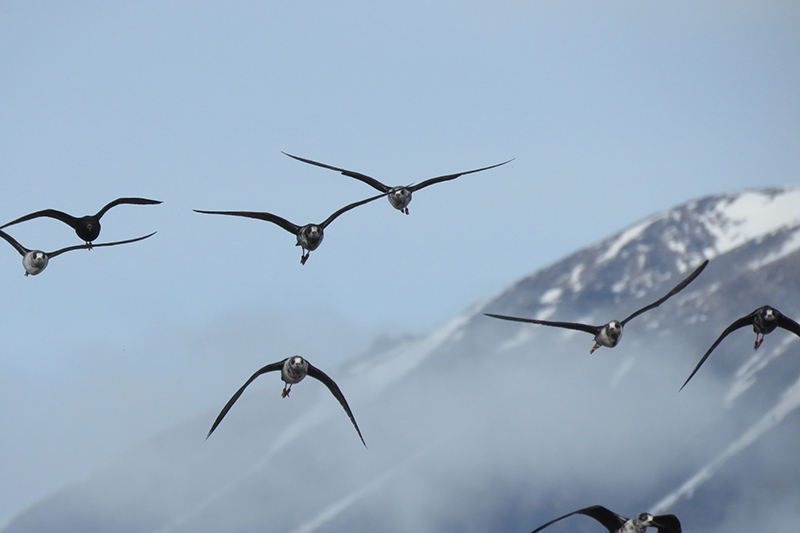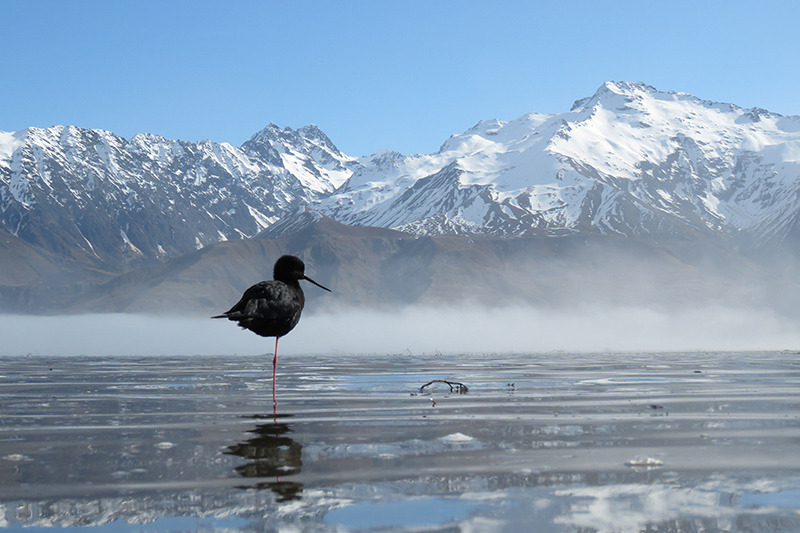If you are lucky, you may encounter several while riding the Alps 2 Ocean Cycle Trail.
Staunch, fierce, rare and beautiful, kakī exemplify the qualities of true New Zealanders. Once common and widespread throughout most of Aotearoa, these long-legged charmers are now only found in the braided river habitats of the MacKenzie Basin. Kakī found itself on the brink of extinction by the 1980s, with only 23 birds left in the wild – a number that has slowly increased to about 150 today.

|  |
| Credit: Liz Brown | Credit: Liz Brown |
Kakī facts :
- World’s rarest wading bird
- Around 150 adults left in the wild
- In the 80s numbers got down to 23
- Only found in New Zealand in Te Manahuna / the Mackenzie Basin (and sometimes Upper Waitaki)
- A homebody – sticks around Te Manahuna all year
- Hangs out in braided rivers, nears streams, ponds and swamps
- Tough – can withstand -20 to +40 degree temperatures
- Smart - young birds are mottled coloured for camouflage, they go black at about 18 months
- Good looking - they have long, red legs, a slender body and needle-like bill
- That bill helps it get to small fish, mollusks and insects
- Loyal – they mate for life
| - They nest close to the water in nests made of twigs, grass and aquatic plants
- Most females lay 1-4 eggs in October
- Eggs look cool – green or olive brown covered with dark brown spots (again for camouflage)
- Fair - both parents incubate the eggs for 25 days
- DOC’s Kakī Recovery Programme has brought them from the brink of extinction
- Te Manahuna Aoraki Project helps protect them by trapping the braided rivers
- Quick learners - chicks can hunt and swim almost immediately after birth
- In danger – they are very vulnerable to introduced predators like stoats, feral cats, hedgehogs, ferrets and airborn predators like harriers and black-backed gulls.
- Connected – Hollywood stars like Leonardo di Caprio have tweeted and posted about kakī
|










